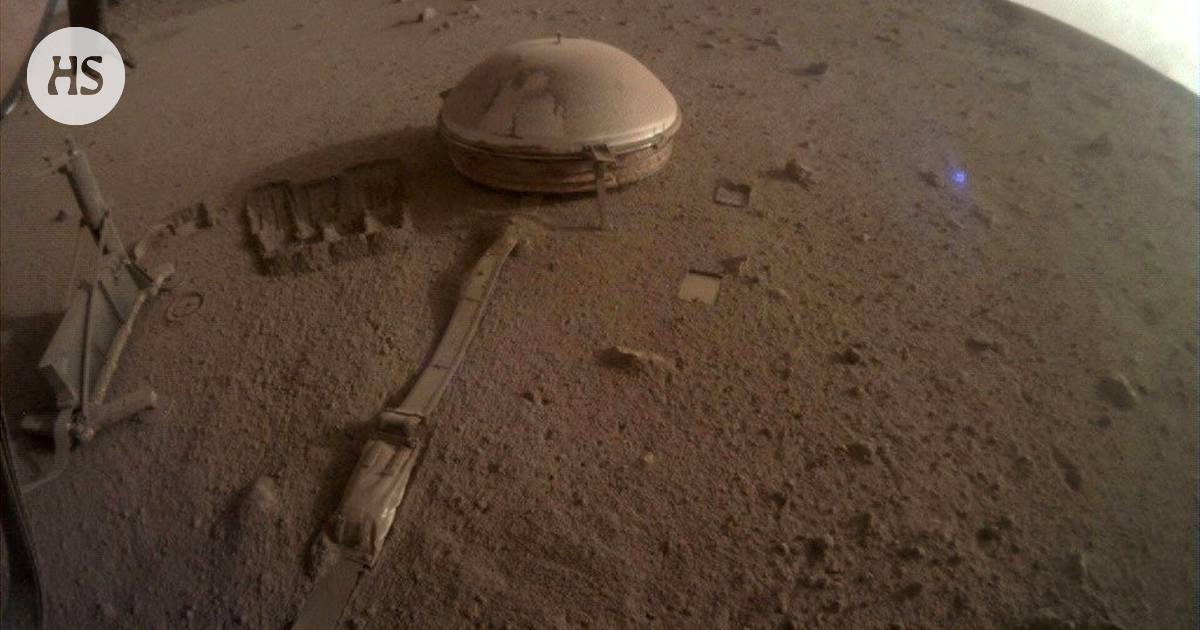Space|Scientists say the water discovery answers the question of where all the water on Mars once went. There can be so much water that on the surface of Mars it would form a one kilometer deep sea.
The summary is made by artificial intelligence and checked by a human.
Under the surface of Mars, indications were found that there is a lot of water in the depths of the planet.
Water is located in the crust of Mars at a depth of more than 11 kilometers.
The water was found in the seismic measurements of the Insight lander. It explored the structure of Mars between 2018 and 2022 until its instruments became dusty.
Planet Liquid water has been found under the surface of Mars for the first time. Water was found Insight lander by examining measurement data.
There is perhaps so much water in Mars’ mantle that on the surface it would form a sea one kilometer thick or deep, say planetary researchers.
The water found is located in the crust of Mars. Still, it is more than ten kilometers deep.
On Monday, he told about Mars’ water reserves Journal of the American Academy of Sciences PNAS.
Martian on the surface, water is frozen at its poles and as water vapor in the gas atmosphere. However, this is the first time that liquid water has been found on the planet.
There is not nearly as much water on the hubs and in the gas ring as in the water reserves found now, says the website Science Alert. So the amount of water on the surface cannot explain why you can see dried riverbeds and lakes on the surface of Mars.
Also on Earth, a large part of the water is underground. There is no obstacle to the fact that this is also the case on Mars, Manga says to the BBC.
The current sandy surface of Mars has remained a similar desert for a long time, already about three billion years. Some of the water evaporated into space when Mars lost its thick atmosphere. Now it’s very thin.
Insight was a wheelless lander to study the structure of the planet Mars between 2018 and 2022.
Insight used a seismometer to measure earthquakes on Mars, or “martian earthquakes”. It also measured the winds of Mars and even recorded the howling of the winds. Insight also measured the planet’s temperatures with a meter trade below the surface of Mars.
Insight recorded “Mars pulses” for four years. Its seismometer recorded more than 1,310 earthquakes.
Planetary explorers measured how fast these seismic waves travel in the Martian crust and mantle. The researchers found out from the pulses which material earthquake waves are most likely to move through.
“We use the same methods when we look for water, oil and gas on Earth,” says the professor Michael Manga from the University of California, Berkeley For the British Broadcasting Corporation, the BBC. Manga is one of the authors of the report published in the journal PNAS.
Insight was only able to record data from the part of the Martian crust that was directly under the lander’s feet.
However, scientists believe that similar bodies of water can be found all over the planet.
NASA’s Insight lander used the waves of Martian earthquakes to find out what the internal structure of the planet is like.
Vibrations revealed water reservoirs at a depth of about 11–20 kilometers. So they are in the crust of Mars, but not quite near the surface.
The water appears to be so deep that it may be difficult for future settlements to exploit it. However, the discovery has other value.
Scientists say the water discovery answers the question of where all the water on Mars once went.
“On Earth, underground groundwater has flowed down from the surface. We believe that this also happened on Mars,” says the researcher Vashan Wright according to The Guardian newspaper.
Wright is an assistant professor at the Scripps Institution of Oceanography at the University of San Diego.
Water may also be present in minerals.
There used to be a lot of water on the surface of Mars. This is evidenced by the numerous riverbeds and river estuaries on the surface of Mars, as well as the withered lakebeds.
“Understanding the Martian water cycle is important when we want to find out the Martian climate and its geology,” Wright tells the BBC.
Martian the location of groundwater in the deep is not pleasant news for those who want colonies on Mars.
Drilling a hole of more than ten kilometers in the surface of Mars would be even For Elon Musk difficult, Manga tells the BBC.
“If there are habitable regions on Mars, they may be under the surface.”
